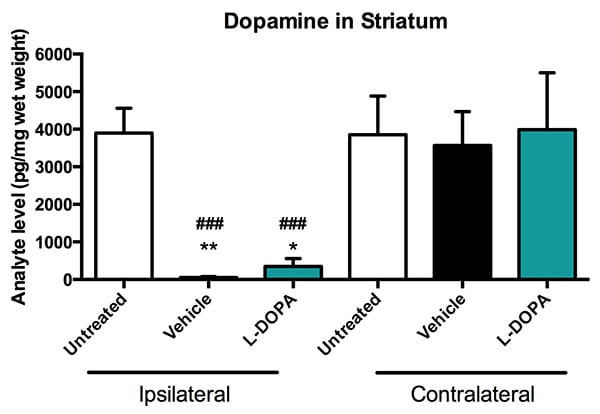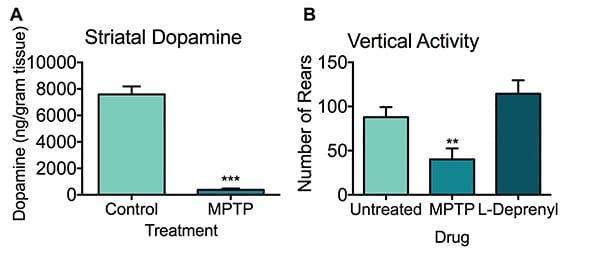Melior Discovery in vivo models of Parkinson’s Disease
in vivo Efficacy: Animal Models
Melior is a leading contract research provider of preclinical in vivo pharmacology services using rat and mouse models of Parkinson’s Disease.
Parkinson’s Disease
Melior has a broad array of preclinical models evaluating neurological conditions and neurodegeneration, including Parkinson’s Disease. This area represents one of Melior’s core areas of expertise. Many of these rodent models are a staple part of Melior’s theraTRACE® platform. As a result we have been running these models for many years and run these models routinely.
Parkinson’s Disease Models
6-OHDA Rat Model of Parkinson’s Disease
The neurotoxin 6-hydroxydopamine (6-OHDA) is widely used to induce depletion of dopaminergic neurons in animal models of Parkinson’s Disease (PD). Unilateral administration of 6-OHDA into the medial forebrain bundle can produce a 90-95% ipsilateral depletion of dpn neurons in 80-90% of animals injected, leading to a PD – like motor dysfunction.
Striatal dpn was significantly reduced in vehicle and L-DOPA treated animals compared to unlesioned (untreated) animals in the ipsilateral region relative to lesion site. Dpn was also significantly reduced in ipsilateral regions compared to contralateral regions in both vehicle and L-DOPA treated animals. Data are ± SEM; *p<0.05, **p<0.01, compared to ipsilateral unlesioned animals; ###p<0.001 compared to contralateral vehicle and L-DOPA treated animals.
See Additional Data on Our 6-OHDA Rat Model of Parkinson’s Disease
MPTP – Induced Parkinson’s Disease Model
MPTP is a potent and selective nigrostriatal dopaminergic neurotoxin that in mice produces many of the neuropathological features of idiopathic Parkinson’s Disease in humans. MPTP produces nigrostriatal dopaminergic degeneration and locomotor impairment. Pharmacological agents that increase dopaminergic function or that block the neurotoxicity of MPTP also attenuate MPTP-associated locomotor and dopaminergic dysfunction. Moreover, MPTP-mediated toxicity may have some relationship to the mechanisms associated with dopaminergic loss in the disease indicating that this model may also be potentially useful for identifying agents that slow or reduce nigrostriatal dopaminergic loss.
After four days of treatment, mice treated with MPTP exhibit significantly reduced levels of dpn (A) and number of rears compared to control animals. L-Deprenyl attenuates rearing activity, exhibiting no significant changes from untreated animals (B). Data are mean ± SEM; **p<0.01, ***p<0.001 compared to untreated control animals.
Get More Information on Melior’s Parkinson’s Disease models and theraTRACE® Phenotypic Screening Platform:


